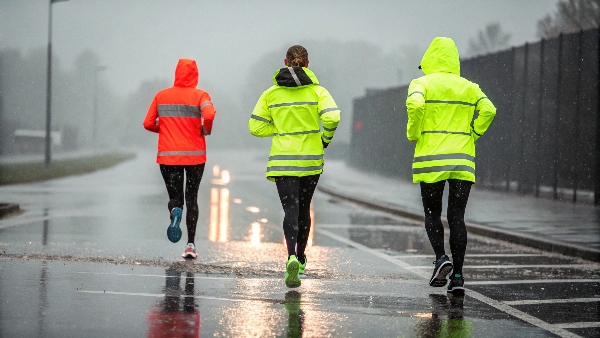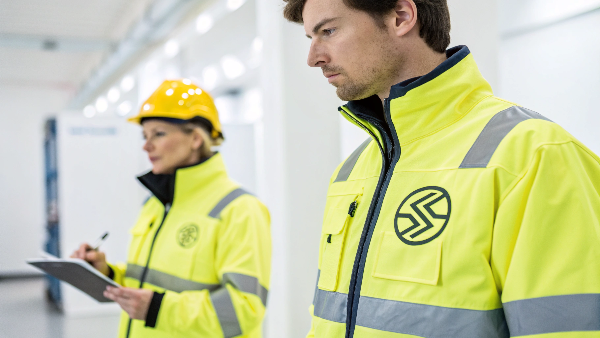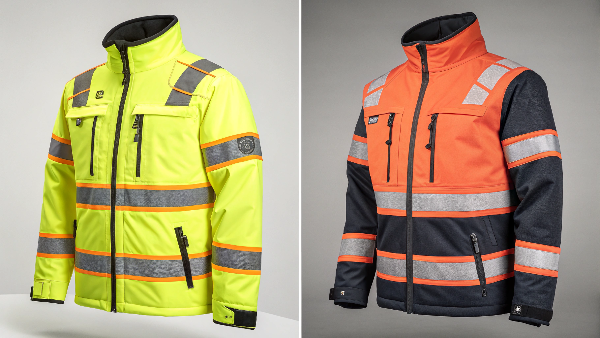Problem: So many hi-vis vest choices out there. Agitate: Picking the wrong one compromises safety. Solution: This guide makes your decision easy and clear.
Men's hi-vis safety vests are crucial for visibility. They use fluorescent colors and reflective tapes. Selecting the correct class, color, and fit is vital for workplace safety and meeting standards.
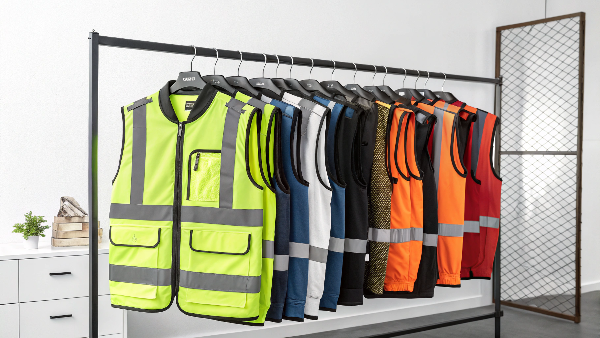
Choosing the right safety vest can seem like a big task. There are many things to consider, from colors to safety standards. We understand this at Vissafety, as we've been manufacturing high-visibility clothing since 2007. Our clients, like Danny Cheng from California, rely on us for compliant and reliable gear. Danny has been with us for 12 years, and his need for specific, standards-compliant products for North America drives us to be experts. Let's break down common questions to help you make the best choice.
What is the difference between yellow and orange hi vis vests?
Choosing between yellow and orange? It’s more than just a color preference. Get it wrong, and worker visibility could suffer in certain conditions.
Fluorescent yellow1 (or yellow-green) offers excellent daytime contrast, especially against darker backgrounds. Fluorescent orange2 (or orange-red) stands out well against complex environments like foliage or urban settings.
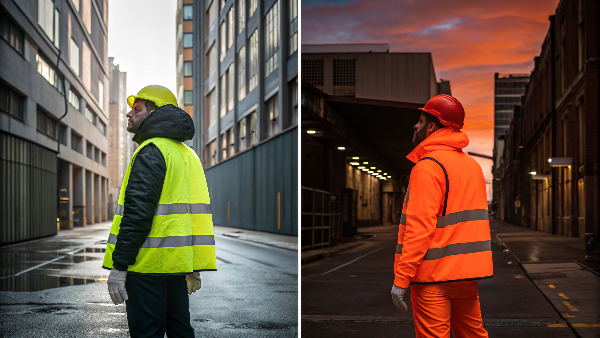
Both fluorescent yellow-green and fluorescent orange-red are standard high-visibility colors3 recognized by ANSI/ISEA 107 and EN ISO 20471. The best choice really depends on the work environment. Yellow is highly luminous and performs well in daylight, making it a common choice for general construction and roadside work where it contrasts well with the sky or darker urban landscapes. Orange, on the other hand, is often preferred in environments with a lot of natural green, like forestry, or in snowy conditions because it provides a starker contrast. I remember a discussion with Danny; one of his clients in the Pacific Northwest found orange performed better for their crews working near dense forests. At Vissafety, we ensure our dyes for both colors meet strict chromaticity and luminance requirements.
Here's a simple comparison:
| Feature | Fluorescent Yellow-Green | Fluorescent Orange-Red |
|---|---|---|
| Primary Use | General construction, urban areas | Forestry, hunting, snowy conditions |
| Best Contrast | Dark backgrounds, overcast skies | Green foliage, bright/complex backdrops |
| Compliance | ANSI/ISEA 107, EN ISO 20471 compliant | ANSI/ISEA 107, EN ISO 20471 compliant |
| Consideration | May blend with some yellow equipment | Excellent all-around visibility |
Ultimately, company policy or a specific risk assessment might dictate the color choice. We offer both, made with top-quality, durable materials.
What are the different grades of safety vests?
Confused by safety vest "grades"? Using a vest with the wrong grade for the job can seriously risk a worker's safety. We'll explain these grades.
Safety vests are typically graded into "Classes" (Class 1, Class 2, Class 3) by standards like ANSI/ISEA 1074. These classes dictate the minimum amount of fluorescent background material and retroreflective tape5.
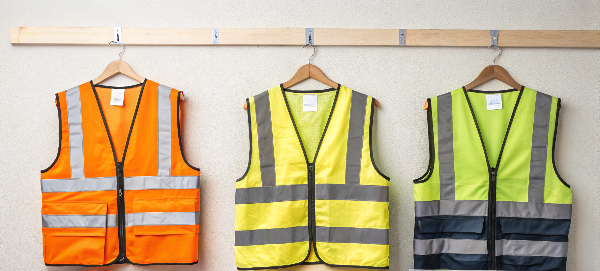
The "grades" of safety vests refer to their performance class, which is defined by safety standards. In the United States, the standard is ANSI/ISEA 107, and in Europe, it's EN ISO 20471. These standards classify garments based on the total area of high-visibility fluorescent material6 and the area and placement of retroreflective tape. The idea is simple: higher risk environments require more visibility. So, a higher class number means the vest provides greater conspicuity. For example, Class 1 is for lower-risk environments, while Class 3 is for the highest-risk scenarios, often involving high-speed traffic. We at Vissafety take these classifications very seriously. Our R&D lab has over 75 testing devices to ensure every vest we produce, whether it's Class 1, 2, or 3, meets or exceeds these global standards. This is crucial for clients like Danny, who supplies various sectors, each with different risk levels.
What do the different color safety vests mean?
Wondering if various safety vest colors have specific meanings? Choosing a color that doesn't fit its intended use can cause confusion or non-compliance. Let's decode them.
Standard hi-vis colors for compliance (like ANSI/ISEA 107) are fluorescent yellow-green7, orange-red, and red. Other colors often denote specific roles or industries but may not be ANSI compliant for visibility.

The primary purpose of hi-vis vest colors8 is to make the wearer conspicuous against their working environment. Fluorescent yellow-green, orange-red, and sometimes red are the main colors recognized by safety standards like ANSI/ISEA 107 for their high visibility in daylight. However, you'll often see other colors used on job sites. These colors typically serve to identify different roles or teams rather than providing primary visibility compliance. For example, blue might be used by law enforcement or utility workers, green by safety officers or emergency personnel, and black or grey by supervisors or managers. It's important to remember that these identification colors, if they are not fluorescent and don't meet specific brightness criteria, do not offer the same level of conspicuity as the standard hi-vis options. We often help clients, including Danny's customers, by creating custom vests that incorporate compliant hi-vis material with accent colors for role identification, ensuring both safety and organization.
Here's a common breakdown, though it can vary by site or company:
| Color | Common Meaning/Use | ANSI/ISEA 107 Hi-Vis Compliant (Typically) |
|---|---|---|
| Fluorescent Yellow-Green | General construction, high visibility | Yes |
| Fluorescent Orange-Red | Road work, construction, high visibility | Yes |
| Fluorescent Red | Often for specific conditions, high visibility | Yes |
| Blue | Law enforcement, utility workers, technical staff | No (unless specifically tested & certified) |
| Green | Safety personnel, emergency response, new workers | No (unless specifically tested & certified) |
| Black/Grey | Supervisors, managers, site visitors | No |
| Pink | Awareness campaigns, specific branding | No (unless specifically tested & certified) |
How do you know what size vest to get for men?
Unsure about selecting the correct vest size for men? A poorly fitting vest can reduce comfort, hinder movement, and even compromise safety. We'll guide you.
To find the right men's vest size, measure the fullest part of the chest. Compare this to the manufacturer's size chart, ensuring the vest fits comfortably over work clothing.
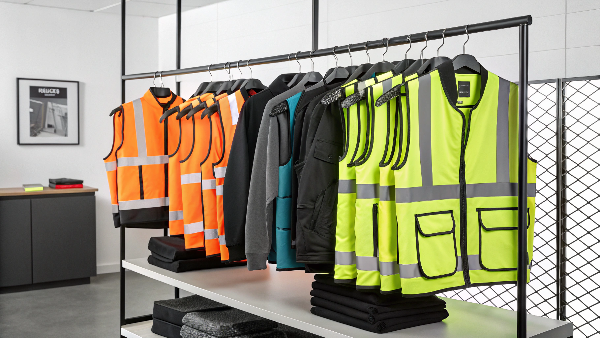
Getting the right size for a safety vest is important for both comfort and safety. A vest that's too tight can restrict movement and be uncomfortable during a long workday. A vest that's too loose can snag on machinery or equipment, creating a hazard. Most manufacturers, including us at Vissafety, provide size charts based on chest measurements. To measure, use a soft tape measure around the fullest part of the man's chest, keeping the tape level. It’s also crucial to consider what clothing will be worn underneath. If bulky jackets are common, you might need to size up. Many of our vests feature adjustable closures, like Velcro or zippers, to allow for a more customized fit over different layers. Danny often emphasizes the need for a good range of sizes for his clients, as a comfortable worker is a safer and more productive worker. We ensure our sizing is consistent, which was a key factor for Danny after he experienced issues with inconsistent sizing from a previous supplier. We also offer custom sizing for large bulk orders.
What is the standard for safety vest?
Wondering about the official standards for safety vests? Using non-compliant vests provides a false sense of security and can lead to legal issues. Learn about key standards.
In the USA, the primary standard is ANSI/ISEA 107. For Europe, it's EN ISO 20471. These standards specify requirements for materials, design, and performance of high-visibility clothing.
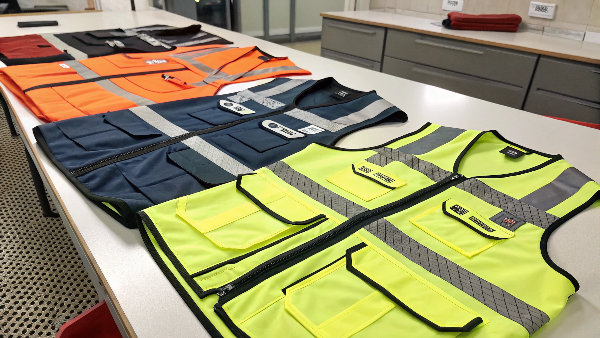
The main standard governing safety vests and other high-visibility safety apparel (HVSA) in the United States is ANSI/ISEA 107, the "American National Standard for High-Visibility Safety Apparel and Accessories." In Europe, the equivalent standard is EN ISO 20471. These standards are critical because they define the minimum requirements for the materials used, including the color (chromaticity and luminance) and retroreflectivity, as well as the design of the garment, such as the minimum area of fluorescent background material and reflective tape, and their placement. For instance, ANSI/ISEA 107 also specifies different "Types" (O for Off-Road, R for Roadway, P for Public Safety) and "Classes" (1, 2, 3) based on the expected work environment and risk level. As a manufacturer, Vissafety is deeply committed to these standards. Our in-house lab rigorously tests materials and designs to ensure every product we ship, whether for Danny's North American clients or our global partners, meets or exceeds these requirements. Checking the garment's label for a statement of compliance to ANSI/ISEA 107 or EN ISO 20471 is the best way to ensure it's up to par.
What are the legal high-vis colors?
Unsure which hi-vis colors are officially recognized or legally mandated for safety? Using a non-standard color can lead to non-compliance in regulated environments. We'll clarify.
The legally recognized high-visibility colors, as defined by standards like ANSI/ISEA 107 and EN ISO 20471, are fluorescent yellow-green, fluorescent orange-red, and fluorescent red.
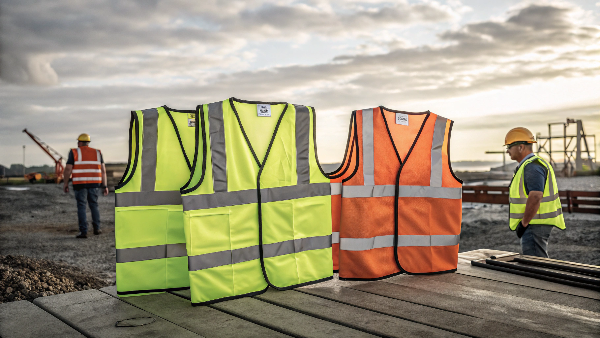
When we talk about "legal" high-vis colors, we're referring to the colors that are specified as compliant by occupational safety standards like ANSI/ISEA 107 in the U.S. and EN ISO 20471 in Europe. These standards have identified specific fluorescent colors that offer the highest level of conspicuity during daytime hours. These are:
- Fluorescent Yellow-Green: This is a very bright color that offers excellent contrast against most urban and natural backgrounds.
- Fluorescent Orange-Red: This color provides strong contrast, especially against foliage, snow, and complex backgrounds.
- Fluorescent Red: While less common in some regions for vests, fluorescent red is also a recognized compliant color.
The reason these specific fluorescent shades are mandated is due to how the human eye perceives them, especially in daylight and twilight conditions. Their brightness and ability to stand out are scientifically measured. At Vissafety, we ensure our fluorescent materials strictly adhere to the chromaticity coordinates and luminance factors defined in these standards. This is something Danny Cheng particularly values, as his clients in construction and logistics depend on full compliance for their workers' safety. Using non-specified colors might be acceptable for identification but not for primary visibility in regulated work zones.
What does pink hi-vis mean?
Seen pink hi-vis vests and wondered about their significance? It's often more than just a style choice, but it's important to understand their compliance status.
Pink hi-vis vests are frequently used for breast cancer awareness campaigns9 or by companies seeking a unique brand identity. However, fluorescent pink is not typically an ANSI/ISEA 107 or EN ISO 20471 compliant color for general occupational high visibility.

Pink high-visibility vests have gained some popularity, but their meaning and use need clarification. Most commonly, pink hi-vis garments are associated with breast cancer awareness initiatives, particularly during October. Companies might use them for fundraising events or to show support. Some businesses also adopt pink as a distinct company color to stand out. However, it's crucial to understand that standard fluorescent pink is generally not a recognized high-visibility color under ANSI/ISEA 107 or EN ISO 20471. These standards have very specific requirements for color chromaticity (shade) and luminance (brightness) to ensure maximum visibility, and most pinks don't meet these. If a pink vest is used in a regulated work environment requiring compliant HVSA, it might not provide the necessary level of safety or meet legal requirements. At Vissafety, we can produce custom pink garments, but we always advise clients like Danny to be clear about their intended use. For actual worksite safety, they should be an addition to, not a replacement for, compliant yellow, orange, or red HVSA, unless the specific pink material has been independently certified to meet the hi-vis standards, which is rare.
What is the difference between a class 1, 2, and 3 safety vest?
Confused by Class 1, Class 2, and Class 3 safety vests? Choosing the wrong class for the job can significantly compromise worker safety. Let's clarify these important distinctions.
Class 1 vests are for low-risk environments. Class 2 for moderate risks with traffic under 25 mph. Class 3 offers maximum visibility for high-risk, high-speed traffic or low-light conditions.

The difference between Class 1, Class 2, and Class 3 safety vests, as defined by ANSI/ISEA 107, lies in the minimum amount of fluorescent background material and the minimum amount and placement of retroreflective tape they must have. This directly impacts the wearer's visibility.
-
Class 1 Safety Vests:
- Use: For workers in environments with low-impact hazards and ample separation from moving traffic (speeds not exceeding 25 mph). Think parking lot attendants, warehouse workers, or people retrieving shopping carts.
- Material: Smallest amount of visible materials required.
-
Class 2 Safety Vests:
- Use: For workers who need greater visibility in poor weather or environments with traffic speeds between 25-50 mph. This includes roadway construction workers, utility workers, survey crews, and school crossing guards.
- Material: More background fabric and retroreflective tape than Class 1.
-
Class 3 Safety Vests:
- Use: For workers in the highest-risk environments, where they are exposed to high-speed traffic (over 50 mph), complex backgrounds, or very low light/visibility conditions. Examples include highway crews, emergency responders, and flagging crews.
- Material: Largest amount of visible materials, often including sleeves for added visibility of the arms.
Here’s a general comparison based on ANSI/ISEA 107 requirements (values are approximate minimums and can vary slightly based on garment design):
| Feature | Class 1 | Class 2 | Class 3 |
|---|---|---|---|
| Background Material | 0.14 m² (217 sq in) | 0.50 m² (775 sq in) | 0.80 m² (1240 sq in) |
| Retroreflective Tape | 0.10 m² (155 sq in) | 0.13 m² (201 sq in) | 0.20 m² (310 sq in) |
| Typical Environment | Low-speed, well-separated from traffic | Moderate speed traffic, complex backgrounds | High-speed traffic, poor visibility conditions |
| Garment Examples | Basic vest | Vest, T-shirt | Vest with sleeves, Jacket, Coverall |
At Vissafety, we manufacture vests meeting all three classes. Danny Cheng often orders a mix of classes for his clients, as their needs vary widely. Ensuring the right class is used is fundamental to workplace safety programs.
Conclusion
Choosing the right men's hi-vis vest is simple with the right information. It boosts safety and ensures compliance. We hope this guide helps you select wisely.
-
Explore the advantages of Fluorescent yellow for safety and visibility in various work environments. ↩
-
Learn why Fluorescent orange is crucial for safety in complex environments like forests and snow. ↩
-
Understand the standards and regulations for high-visibility colors to ensure safety compliance. ↩
-
Understanding ANSI/ISEA 107 is crucial for ensuring safety compliance in high-risk environments. Explore this link to learn more about its standards. ↩
-
Retroreflective tape significantly enhances visibility in low-light conditions. Learn how it works and its importance in safety gear. ↩
-
High-visibility fluorescent material is essential for worker safety. Discover its properties and applications to enhance safety measures. ↩
-
Fluorescent yellow-green is a key color for visibility. Learn why it's essential for safety in various industries by exploring this link. ↩
-
Discover the meanings behind hi-vis vest colors to enhance safety and compliance on job sites. This resource will clarify their importance. ↩
-
Explore this link to understand how breast cancer awareness campaigns make a significant impact on community health and support. ↩

